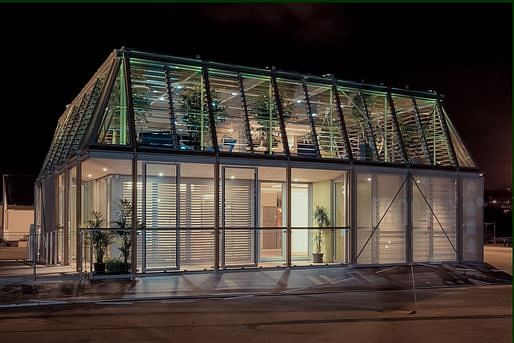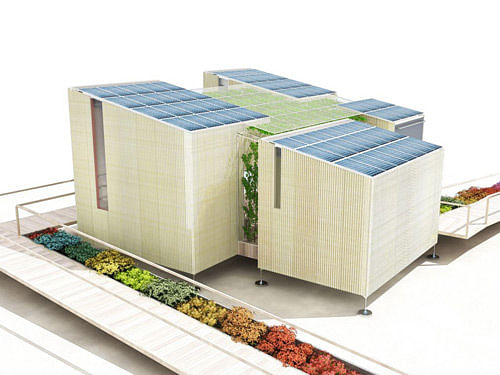

The European Solar Decathlon took place in Madrid in late September and included teams from around Europe as well as Brasil and China. There are some really interesting designs that came out of the competition and given that Europe is usually quicker to adopt and implement sustainable strategies, it’s worth reviewing the top designs.
Team Rhone-Alpes won the overall competition with their modular Conopea House which can grouped horizontally to vertically to create even more efficient clusters or, “nanotowers” as the team calls them. The concept is inspired by the forest canopy eco-system which captures 95% of solar energy and 30% of rainfall. The design relies on the pooling of resources collected by each building for greater project autonomy. While one module can survive on its own, their collective impact is exponentially greater thus promoting controllable density.

Canopea House
Team Andalucia won the Energy Efficiency and Innovation Category with its Patio 2.12 House. This design is the work on four Andalucian Universities and rather poetically is manifested in 4 pre-fabricated structures around a central courtyard. The entire building is built upon a plinth which makes assembly and dis-assembly significantly easier and allows for complete removal of the building from the site it occupies. The design addresses both energy consumption and human comfort with elements like the pond which is part of the cooling system, water recycling system and is integrated into the main approach to the project.

Patio2.12
No Surprise here: Germany won the Engineering Prize with their ECOLAR House submission. Their modular and adaptable design is made from sustainably sourced wood construction, hemp insulation and phase change ceiling panels. The design also incorporates 3 different kinds of vertical and roof-top solar panels which are considerately integrated into the design. The proposal is simple and beautifully detailed with warm materials and both indoor and outdoor spaces.

Ecolar House
Overall, the submissions employed a robust implementation of passive strategies, efficient use of materials, construction techniques, and active technologies. The more seamlessly integrated all of the different elements are, the more easily they can be applied to projects of all types and sizes.
A discussion on everything to do with sustainable design. From renewable energy to implementing integrated design in professional practice. Case studies, article reviews and green building certification methods and additional resources will all be included.
1 Comment
This is great!
Block this user
Are you sure you want to block this user and hide all related comments throughout the site?
Archinect
This is your first comment on Archinect. Your comment will be visible once approved.